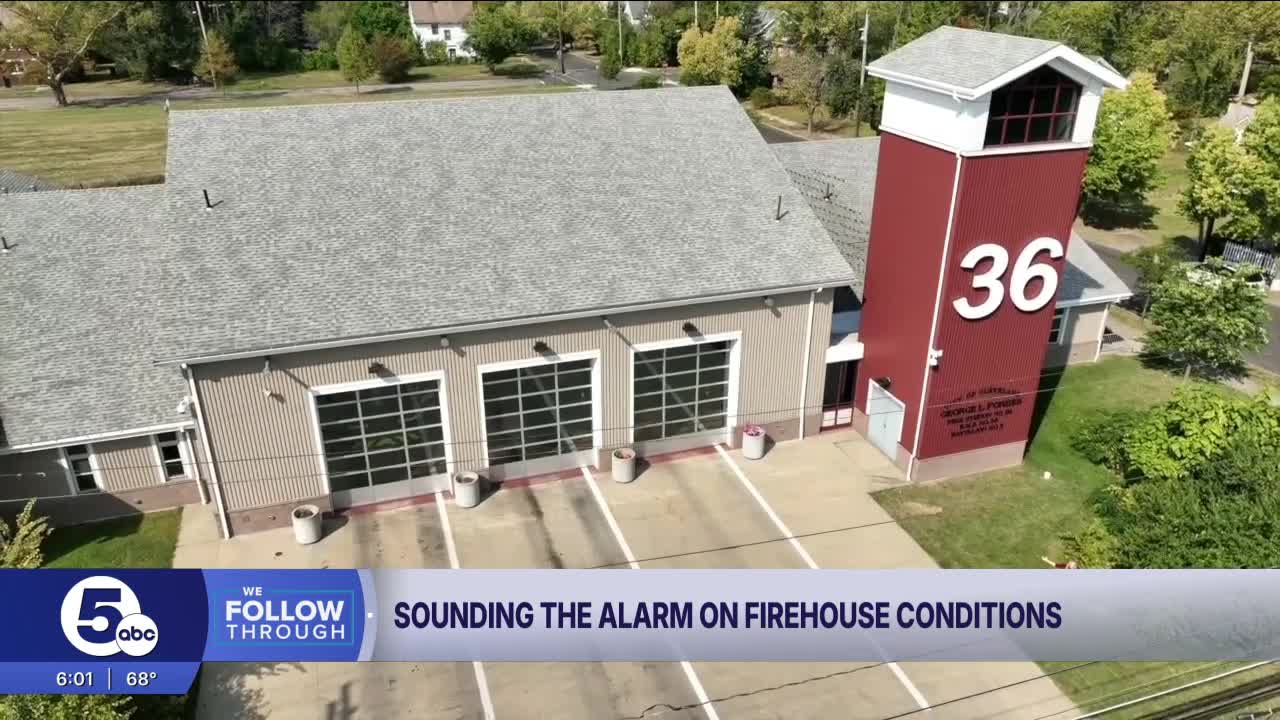CLEVELAND — A Cleveland fire station was forced to shut down after firefighters complained about water leaks, mold and a bad smell.
News 5 Investigators found the station's problems aren't unusual — in fact, they're closer to the norm across the Cleveland Division of Fire's buildings.
The closure of Station 30 led News 5 Investigators to ask about conditions at all 27 of the department's buildings. An internal report obtained by News 5 revealed that none of the buildings are in good condition, with issues ranging from leaking urinals and mold to broken HVAC systems and plumbing problems.
Click in the map below to see each fire station and how it ranks in the following categories: Roof condition, Infrastructure, HVAC, Plumbing, Electrical and Female Facilities.
City officials blame years of neglect and deferred maintenance. They said there are long-term plans in the works to improve conditions.
Station 30 remains shut down
Station 30, located on St. Clair Avenue in the Glenville neighborhood, has been closed since May, after firefighters complained about the poor conditions.
Watch more about the conditions firefighters were dealing with:
Related: Cleveland fire station closed over water leaks, mold concerns, bad smell
Cleveland resident Deionte Johnson said he is concerned about emergency response times due to the closure.
He often walks by the station when he visits family in the neighborhood — family he wants to protect. But now, help is further away.
"It's very alarming," Johnson said. "They just need to do better."
Significant repairs are needed at nearly every fire station
After Station 30 was shut down, News 5 Investigators requested detailed information about the conditions of all the city's stations.
An internal report we obtained shows Station 30's problems are part of a much larger infrastructure crisis.
Read the report below:
Nearly every Cleveland fire station needs significant repairs, according to the report. Out of the fire department's 27 buildings, none were rated in good condition in all of the areas reviewed.
"You look at the conditions of the roofs, you look at the infrastructure — plumbing, electrical, HVAC — poor, poor, fair, fair, poor, poor, poor, poor," Cleveland Councilman Mike Polensek said, reading the report. Polensek, who represents Ward 8 and chairs the Public Safety Committee, has served on the city council since 1978.
"It's years of neglect. We build things. The city builds things but doesn't maintain them," he said.
Already falling apart
For example, Station 36 on the city's East Side is not even a decade old but already has a leaky roof, clogged sinks and a broken HVAC system, according to the report.
There are even more problems at Station 28, located Downtown across the street from Progressive Field.
The report said "all aspects" of the building are in "very poor condition."
Many of the station's windows are boarded up. Among other issues, the boiler "constantly shuts down" and "roof leaks throughout" need to be repaired.
Station 4, on Lorain Avenue on the city's West Side, appears fine from the outside — but inside, it's a different story.
Among a laundry list of open work orders is a complaint that "the locker room urinal leaks into (the) closet and hallway behind urinals."
Firefighters' union hopeful about Bibb administration plans
Jake Konys, president of the Cleveland Fire Fighters Association, said Mayor Justin Bibb's administration has promised to improve conditions at the city's fire stations.
"We've gone through some tough times," Konys said. "We're really starting to see a plan come together that I believe is going to address these concerns."
Why are CLE fire stations in bad shape?
For weeks, Cleveland officials — including Bibb — have refused to discuss the report's findings or the city's plans to improve conditions.
Earlier this month, at a ribbon-cutting for the city's newest station on Kinsman Road, News 5 talked to Mark Duluk, manager of the Mayor's Office of Capital Projects. He is in charge of developing a plan to fix up the city's fire stations.
When asked why so many fire stations are in poor condition, Duluk said it was due to "mostly, deferred maintenance."
Duluk could not explain why the buildings were neglected for so long, but said it would cost about $10 million to bring stations to a "basic level of livability."
"We are marshaling whatever resources we currently have in hand to direct to whatever the most immediate needs of those stations are," Duluk said.
The city's long-term plan includes upgrading some stations and replacing others. The first example is the new Station 26.
However, Duluk could not put a price tag on the plan, and it remains unclear how the city will pay for it.
Residents want results
Johnson said the city should prioritize repairs to its fire stations.
"They need the money for this so that we can continue to have a good safe environment," he said.
A city spokesperson did not provide a specific date, but said Station 30 is expected to reopen this fall.
Firefighters and an EMS crew formerly stationed at Station 30 were relocated to other stations. The city said the station's closure has not impacted response times.




